The French Riviera in Film: Exploring Cinematic Glamour
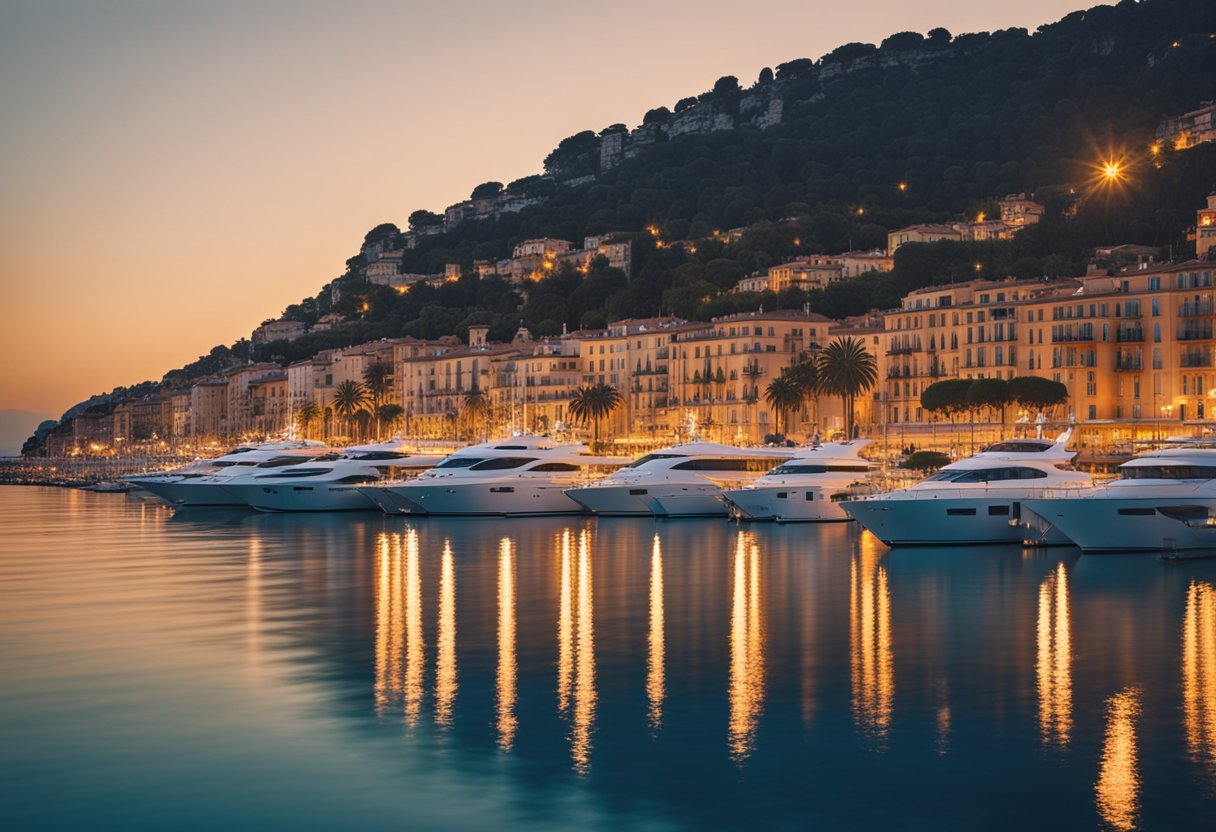
Updated On: April 26, 2024 by Raghda Elsabbagh
The French Riviera, or Côte d’Azur, has long captivated filmmakers with its luminous light, azure seas and glamorous resorts, becoming a star in its own right on the silver screen. Since the mid-20th century, this picturesque region of France has served as the backdrop to a wide array of films, including the undeniably classic To Catch a Thief by Alfred Hitchcock to the more recent Grace of Monaco. These films not only showcase the natural beauty of the Riviera but also embody the luxury, intrigue, and drama that the location is renowned for.

Our fascination with the region is further accentuated by the cinematic legends it has hosted, with actors bringing to life stories of romance, adventure, and mystery. The presence of Hollywood icon Grace Kelly, who left her mark in the film industry before becoming a real-life princess of Monaco, stands as a testament to the Riviera’s magnetic allure. The region’s influence extends beyond the frame, impacting fashion, art deco design and even triggering tourism booms – all of which mirror the transformative effect cinema has on culture and society.
Table of Contents
The Allure of the French Riviera in Film
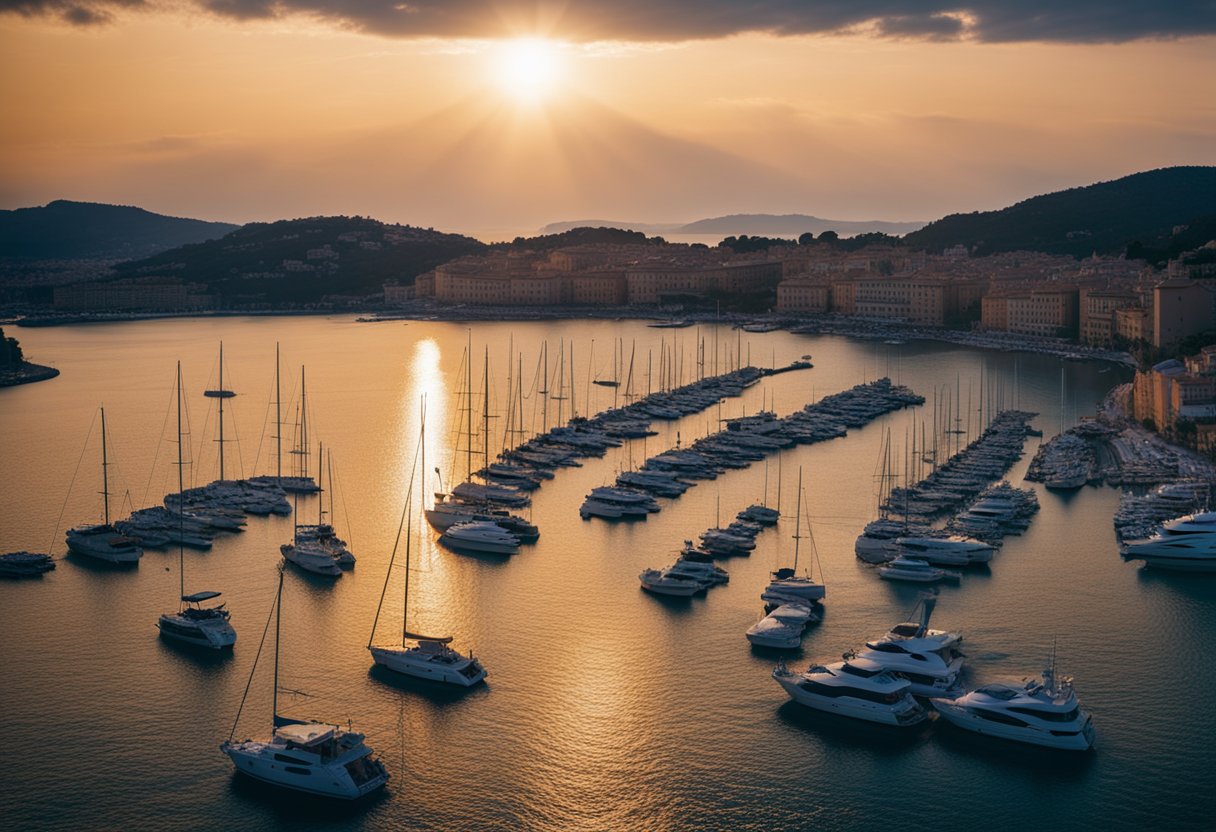
At the heart of cinematic glamour and picturesque landscapes lies the French Riviera, a stretch of coastline also known as the Côte d’Azur. From the rich azure hues of the Mediterranean Sea to the chic boutiques and cafés lining the famed Promenade des Anglais in Nice, this region captivates with an irresistible charm.
Cannes and Saint-Tropez are synonymous with luxury and elegance, offering enchanting scenes of yachts framing the quaint coastal town harbours. The allure extends to the cobblestone streets of old towns, like the bustling Boulevard Jean Jaurès in Nice, where history and culture are palpable.
Our wanderlust is further fuelled by the tucked-away villages such as Èze or La Turbie, boasting panoramic views atop their perches on rugged hills. Here, the fragrant air is redolent with the scent of Provence and hints of jasmine and lavender from nearby Grasse, the perfume capital of the world.
With destinations like the serene Villefranche-sur-Mer and the secluded beauty of Saint-Jeannet, each locale along the Riviera is a gem in its own right. The region’s sprawl from the bustling centre of Nice out to the sleepy, sun-drenched streets of Saint-Tropez encapsulates a spectrum of experiences, from the vibrant to the serene.
The French Riviera, including Côte d’Azur and South of France, isn’t just a place; it’s a canvas where life is both a picture postcard and a scene straight out of a classic film. It’s where the art of vacation and escape is perfected, and each visit feels like stepping into a silver-screen dream.
Pioneering Films and Hitchcock’s Legacy
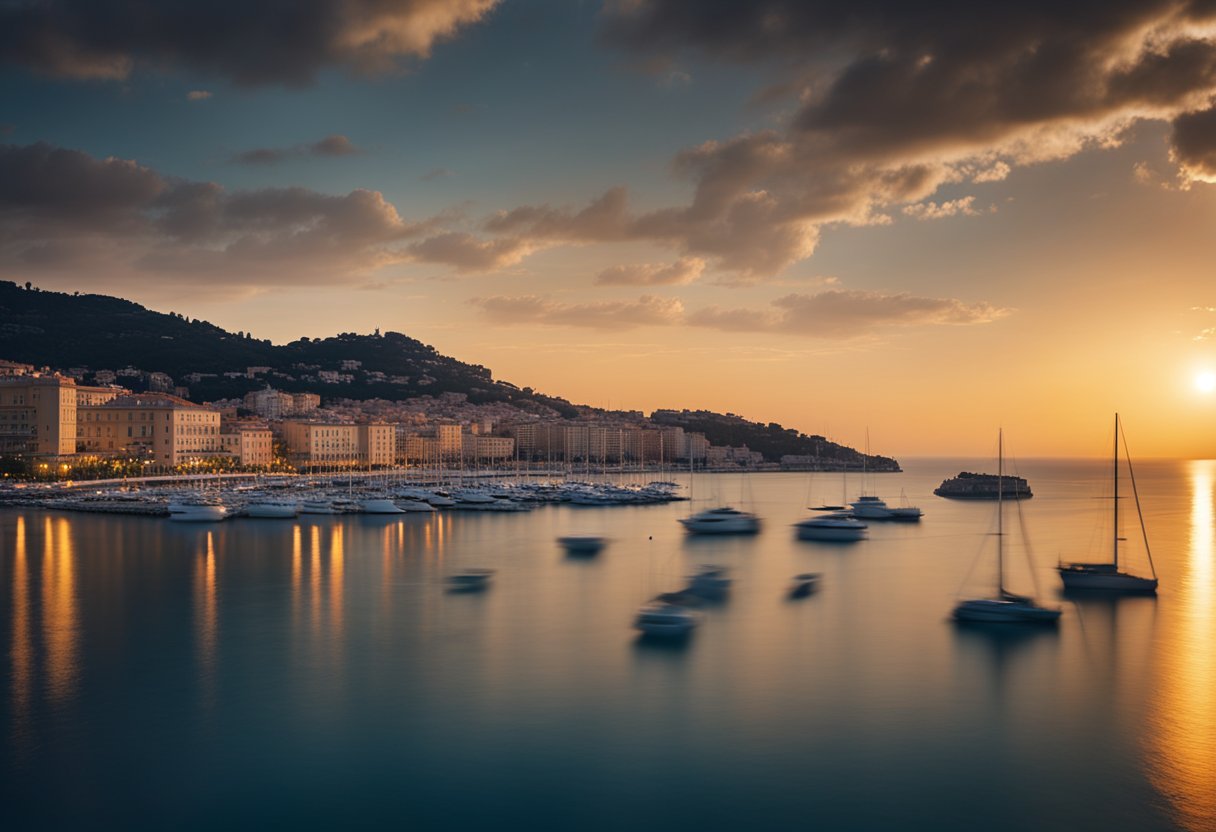
In the realm of cinema, the French Riviera has served as a dazzling backdrop for numerous films, establishing it as a beacon of glamour and suspense. Among the trailblazers, Alfred Hitchcock’s To Catch a Thief is a quintessential example, marrying the allure of the Riviera with the director’s knack for intrigue. The film, starring Cary Grant as a reformed cat burglar and Grace Kelly, epitomises the era’s cinematic elegance alongside Hitchcock’s masterful touch.
The Riviera’s Art Deco elegance complements Hitchcock’s legacy of pioneering a unique cinematic style. To Catch a Thief not only showcases suspense and romance but also immortalises the picturesque setting. Hitchcock’s influence endures, inspiring generation after generation with his use of location as a character in its own right.
| Hitchcock Film on the French Riviera | Year | Lead Actors |
|---|---|---|
| To Catch a Thief | 1955 | Cary Grant, Grace Kelly |
The film’s impact extends beyond its narrative, with many considering the Riviera scenes to have contributed significantly to the brand of Hitchcock himself — a blend of sophistication and underlying tension. Our appreciation of his work is as vibrant as the opulent setting he chose, a testament to his enduring influence on the cinematic portrayal of the French Riviera.
Grace Kelly: From Silver Screen to Monaco Royalty

Grace Kelly’s transition from Hollywood star to European royalty is a tale of glamour and duty. Her marriage marked the beginning of a new chapter for both her and Monaco, forever intertwining her legacy with that of the principality.
The Marriage to Prince Rainier
In an event that captivated the world, Grace Kelly married Prince Rainier III of Monaco in April 1956. This union was not just a personal commitment but also a significant event for Monaco. Kelly’s star power brought unprecedented media attention to the small principality, highlighting its charm and potential as a haven for the rich and famous. The wedding, a spectacle of the era, was dubbed “The Wedding of the Century” and it significantly raised Monaco’s profile on the global stage.
Prince Rainier III and Monaco’s Transformation
Under the guidance of Prince Rainier, Monaco underwent a profound transformation, evolving from a quiet and less-known region into a flourishing destination of luxury and glamour. Prince Rainier was often referred to as the builder prince for his role in modernising the principality’s infrastructure and economy.
Following their marriage, Grace Kelly retired from acting to focus fully on her duties as Princess Grace, which involved numerous charitable endeavours and representing Monaco across the globe. Her elegance and benevolence were instrumental in furthering Rainier’s vision, elevating Monaco to the status of an international jet-set escape and a hub of cultural sophistication.
Iconic Filming Locations Along the Côte D’Azur
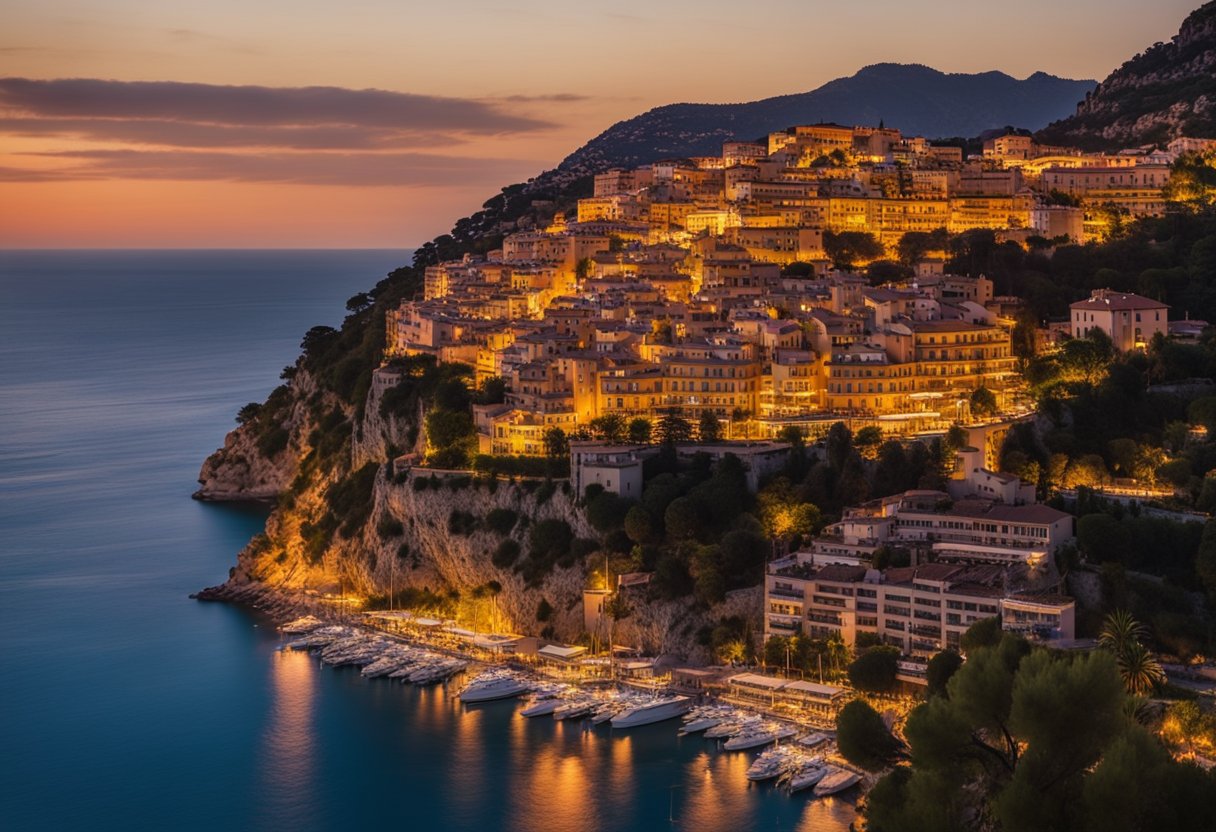
The Côte d’Azur has long been a glamorous backdrop for the silver screen, with its azure waters and stunning landscapes. One iconic film that showcased the region’s luxury and allure is Alfred Hitchcock’s To Catch a Thief. The French Villa, where much of the film’s action takes place, is just one example of the Riviera’s cinematic charm.
Hotel Carlton in Cannes is another famed spot that has hosted film crews and stars alike. Its grandeur and seaside elegance have made it a preferred filming location and a gathering point during the Cannes International Film Festival. This iconic hotel, with its expansive terraces, provides a picturesque setting worthy of any blockbuster.
Many properties along the Côte d’Azur embody the sophistication of the region, like those under Côte d’Azur Sotheby’s International Realty, which are quite frequently sought after as locations offering an authentic Riviera experience.
When productions require a touch of historical luxury, Hotel de Paris in Monaco is often a top choice. Set against a backdrop of azure sea and summer sun, this hotel has provided an opulent setting for films such as Grace of Monaco.
The French Riviera is not only a summer haven but also a canvas for filmmakers to paint their stories. Its terraces, villas, and hotels are not just mere filming locations; they are characters in their own right, offering a glimpse into a world of timeless elegance and beauty that continues to captivate audiences and filmmakers alike.
Cannes Film Festival: A Cinematic Celebration
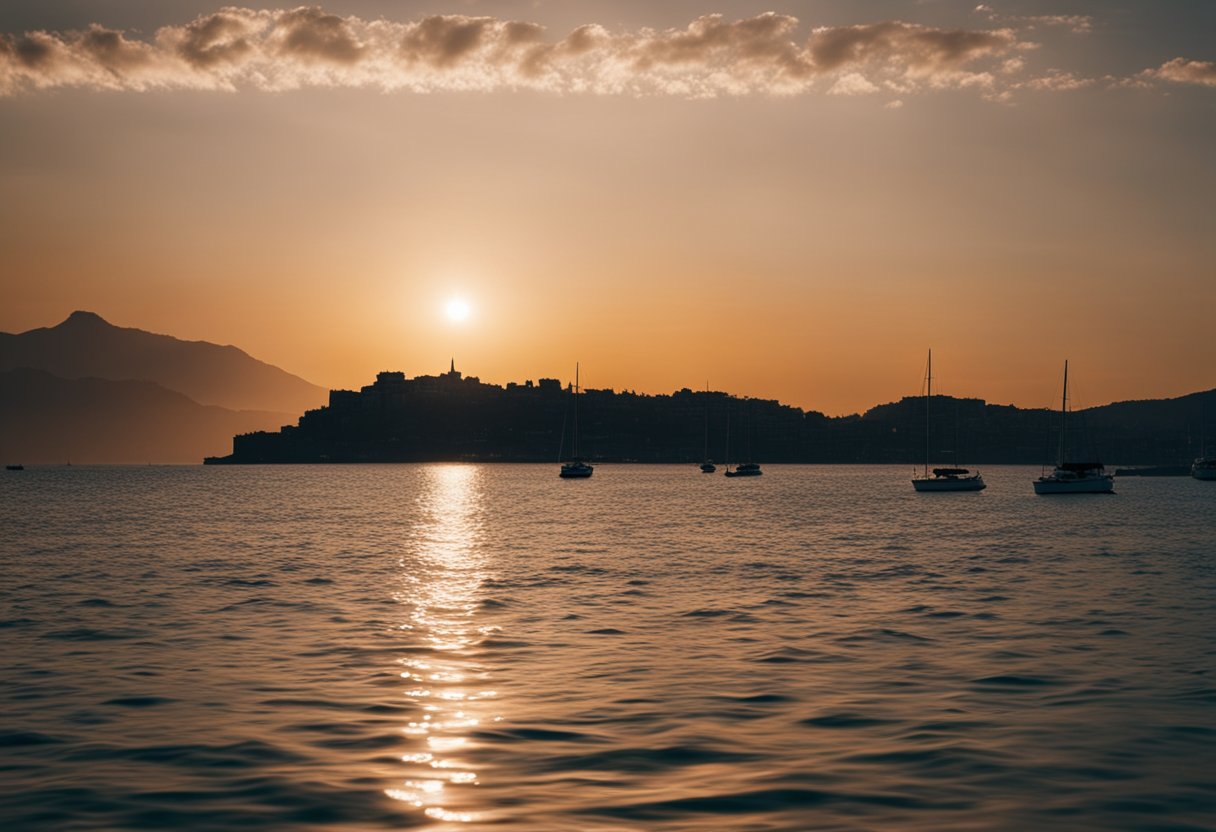
The Cannes Film Festival stands as a pinnacle of international cinema, attracting a global audience to celebrate the art of filmmaking. Throughout its illustrious history, the festival has become a cultural highlight on the French Riviera.
- 1956 saw the premiere of And God Created Woman, making Brigitte Bardot a symbol of France’s cinematic allure.
- In 1969, the stylish La Piscine featured Romy Schneider and drew crowds with its captivating storyline set against a riveting Riviera backdrop.
These films not only showcased the beauty of the region but also contributed to the Cannes Film Festival’s reputation as a launchpad for films that capture the essence of their time. Renowned for its glamour and prestige, the festival brings together the biggest names in the industry, from emerging talent to seasoned veterans.
- Palme d’Or: The highest prize awarded at the festival, a sought-after honour that can propel a film to global acclaim.
- Red Carpet: A symbol of the festival, where stars and filmmakers showcase the convergence of fashion and cinema.
Our participation in this grand event reflects a shared passion for film and culture. As we immerse ourselves in the festival’s exuberant atmosphere, we’re reminded of cinema’s power to unite diverse audiences in a single narrative thread. Whether through timeless classics or contemporary masterpieces, the Cannes Film Festival exemplifies the magic that movies wield in bringing stories to life.
Modern Portrayals of the French Riviera in Film
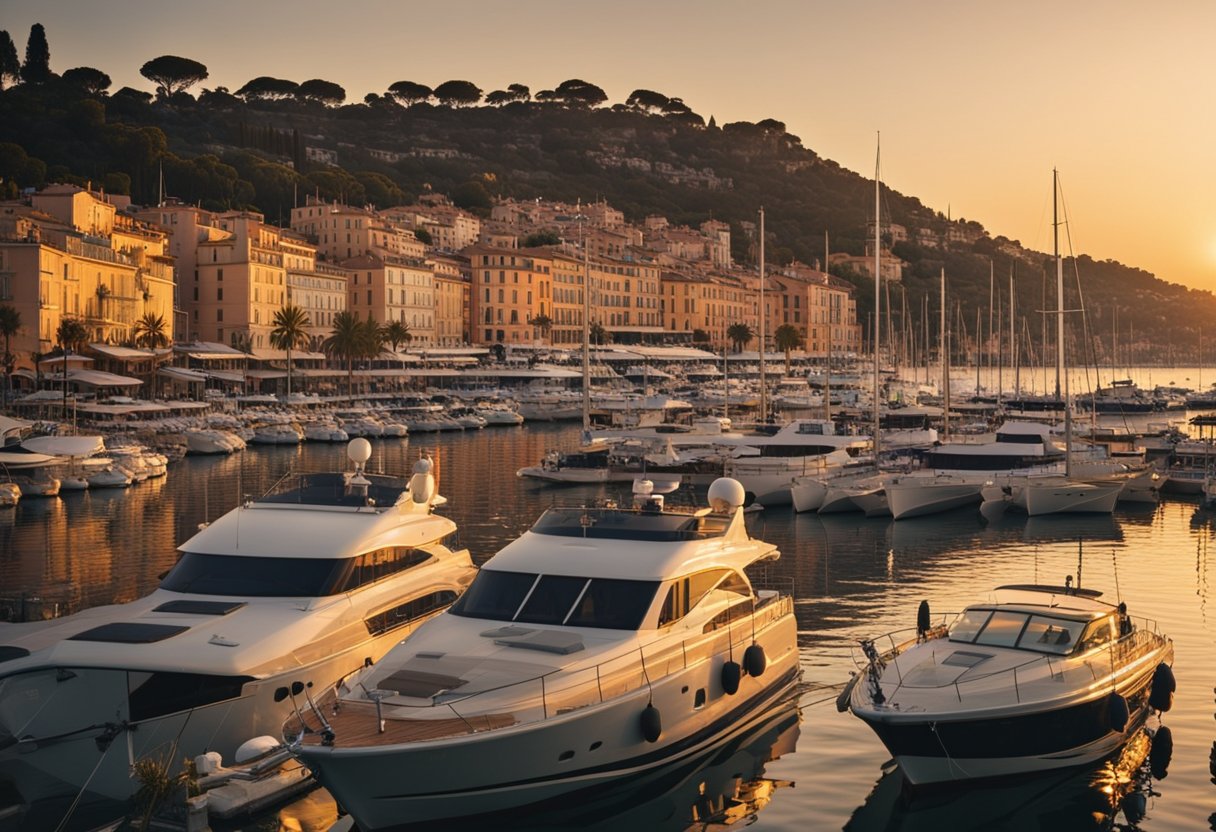
The French Riviera has long been a gleaming jewel in the crown of filmmakers, providing a stunning backdrop for tales of romance, intrigue, and opulence. Our section delves into how modern cinema has continued to capture the allure and mystique of this Mediterranean paradise.
Magic in the Moonlight and Provence Charm
In “Magic in the Moonlight,” we witness the Riviera’s allure through the lens of the 1920s jazz age and how it sets the stage for romantic entanglements. The film invites audiences to a world bathed in the warm Provencal light, a perfect setting for the unfolding of a mystical romance. The mixture of lush landscapes and the luxurious lifestyle epitomised in this movie demonstrates how filmmakers continue to be enchanted by the Riviera’s timeless charm.
Romantic Comedies and Riviera Escapism
The heart-warming genre of romantic comedies has found a cherished setting in the Riviera. Films like “Heartbreaker,” starring Vanessa Paradis and Romain Duris, showcase the Riviera as a playground for both love and levity. The movie uses the stunning locales to amplify its narrative, tapping into the escapism that viewers seek. Each frame showcases a side of filmmaking that leans on the romantic and the picturesque, a testimony to the romantic draw of the region that has always bewitched filmmakers.
Notable Performances and Acclaimed Actors
The French Riviera has long been a scenic backdrop for some of cinema’s most memorable performances. In Alfred Hitchcock’s To Catch a Thief, Cary Grant and Grace Kelly famously dazzled audiences with their on-screen chemistry. Set against the opulent landscape of the Côte d’Azur, their captivating performances encapsulate the glamour and intrigue that the Riviera epitomises.
Brigitte Bardot became a symbol of French cinema following her role in And God Created Woman, where her portrayal of an alluring siren in Saint-Tropez propelled her to international stardom. Her unforgettable performance captures the reckless spirit of the era and remains a benchmark in French film history.
List of Acclaimed Actors and Their Riviera Films:
- Cary Grant: To Catch a Thief (1955)
- Grace Kelly: To Catch a Thief (1955)
- Brigitte Bardot: And God Created Woman (1956)
Continuing the tradition of the French Riviera and film, Romy Schneider displayed an exquisite performance, gracing the silver screen alongside Alain Delon, which showcased the deep emotional currents beneath the serene beauty of the coastline.
In more recent years, Vanessa Paradis boasted a remarkable performance in Heartbreaker, pairing with Romain Duris to deliver a charismatic and engaging romance that travelled the lengths of the Riviera. Their work provided a contemporary homage to the timeless elegance of the region.
Each actor not only contributed to the cultural tapestry of French cinema but also immortalised the magnetic allure of the Riviera, reaffirming its status as a cinematic icon.
Art Deco Influence and Cinematic Aesthetics
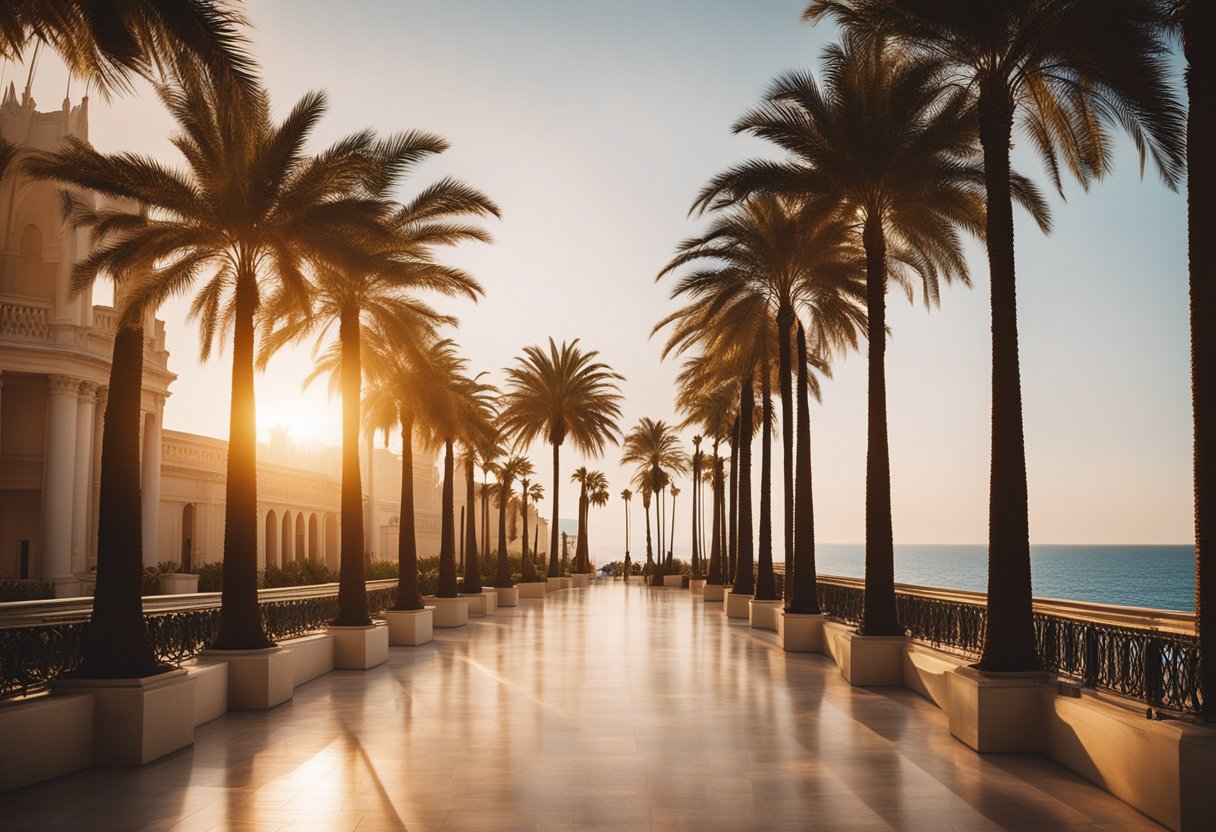
The French Riviera, with its luxurious seaside charm, has served as the stunning backdrop for numerous films. Its association with Art Deco aesthetics reinforces a visual narrative of glamour and elegance, seamlessly blending with the cinematic world. The intricate interplay between Art Deco’s geometric forms and silver screen storytelling is evident in classic films such as To Catch a Thief. The 1950s film, set in the opulent environs of the Côte d’Azur, showcases the region’s lavish villas and hotels adorned with Art Deco symmetrical designs and flamboyant decor.
Our exploration of the region’s cinematic representation would be incomplete without mentioning the meticulous set design. Filmmakers often draw inspiration from the Art Deco movement to recreate the period’s sophistication. The architectural lines and bold patterns weave into the visual elements of a scene, enriching the narrative without overpowering it. For instance, in the film Grace of Monaco, the storied grandeur of the Riviera’s palaces offers a glimpse into the fairy-tale life of its royal protagonist, capturing Art Deco’s luxurious essence through the film’s set pieces.
When considering filming locations, it is integral to highlight the natural symbiosis between the French Riviera’s landscapes and the Art Deco motifs featured within the built environment. The contrast of the dynamic, geometric lines against the fluid beauty of the Mediterranean coastline amplifies the timeless allure of both the setting and the style.
We view the French Riviera as a canvas upon which the cinematic form finds a congenial ally in Art Deco. It is a testament to this partnership that films rooted in this locale continue to captivate audiences through a combination of scenic and architectural splendour.
The Riviera’s Role in Classic and Contemporary Film
The French Riviera, with its stunning scenery and luxurious allure, has long served as a captivating backdrop for both classic and contemporary films. Its cinematic legacy was solidified with Alfred Hitchcock’s To Catch a Thief, where the sparkling waters and opulent resorts underscored a thrilling tale of a reformed cat burglar. This film not only showcased the Riviera’s beauty but also played on its reputation as a playground for the wealthy and the adventures that could unfold there.
Contemporary cinema returned to these glamorous shores with Grace of Monaco, exploring the life of the American actress who became royalty. The film illustrates the enduring appeal of the Riviera as a symbol of elegance and grace, much like Princess Grace herself.
The James Bond series, known for exotic locales, also paid homage to the Riviera’s charm. Never Say Never Again features the region’s casinos and coastal roads, embodying the thrill and sophistication synonymous with the Bond character.
In contrast to these depictions, Hitchcock’s Psycho, although not set on the Riviera, used similar storytelling elements to those found in his Riviera-set thriller. Tension, suspense, and the interplay between appearance and reality, omnipresent in Riviera narratives, were brilliantly employed in this landmark film.
Table: The Riviera in Film
| Era | Film | Contribution |
|---|---|---|
| Classic | To Catch a Thief | Iconic setting; raised profile of the Riviera |
| Contemporary | Grace of Monaco | Continued legacy; focus on elegance |
| Timeless | James Bond Series | Exotic appeal, action and sophistication |
We appreciate the Riviera’s unique ability to blend natural beauty with a sense of mystery and excitement, making it a prime location that filmmakers return to, generation after generation.
Luxury and Intrigue: The Riviera as a Backdrop for Drama
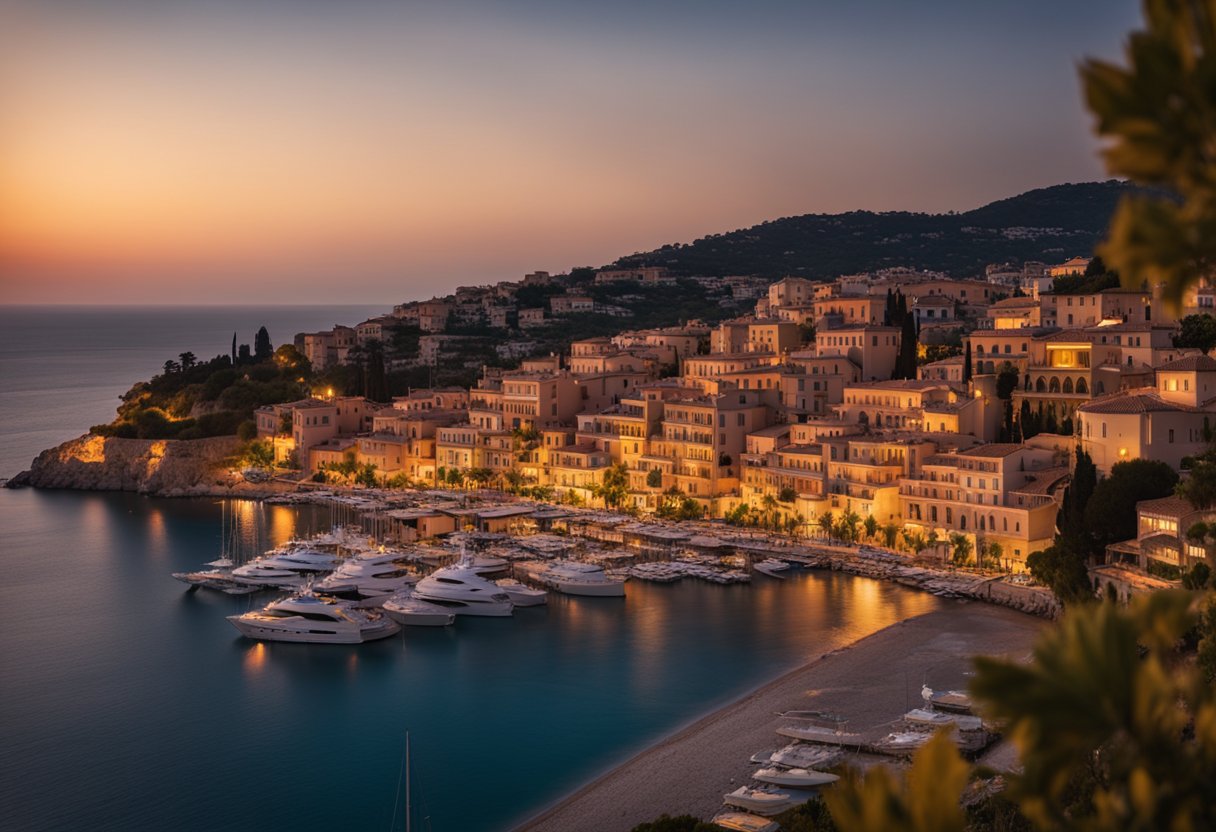
The French Riviera, with its sparkling azure coast and luxurious lifestyle, has long been an emblem of opulence and danger. The region’s lavish casinos and opulent hotels have provided a playground for narrative tension in a myriad of films that capitalise on its air of mystery and wealth. We witness this energy in the classic film To Catch a Thief, where the charm of Cary Grant is matched only by the allure of the Riviera itself.
The grandeur of the locale offers more than a mere setting; it serves as a character in its own right. Its iconic events, like the Monaco Grand Prix, are woven into the plots, amplifying the drama with high stakes and adrenaline-fueled action, as seen in the crisp frames of Grace of Monaco. The region’s extravagant galas and masquerade balls add layers of intrigue as masked identities mirror the double lives of characters involved in clandestine affairs.
Film Depictions:
- To Catch A Thief (1955)
- Grace of Monaco (2014)
Elements of Intrigue:
- Casinos
- Masquerade Balls
- Grand Prix
We find that the drama inherent to the Riviera extends well beyond the silver screen, reverberating in the echoes of the region’s historical grandiosity. It’s no wonder that directors repeatedly choose this backdrop to tell tales that require a blend of glamour and peril, where fortune and deceit dance hand in hand along the coastline.
The French Riviera’s blend of luxury and intrigue is the perfect cinematic partner for plots that require an atmosphere as arresting as the story itself, forever capturing our imaginations with its melding of scenic beauty and narrative potential.
Cultural Impact and Tourism

The French Riviera, known as the Côte d’Azur, has long captured the imagination of travellers with its stunning coastline and the glamour of destinations like Monaco. The rich allure of this locale has been imprinted in cinematic history, notably with films such as To Catch a Thief and Grace of Monaco. These films not only showcase the picturesque beauty of the region but also serve as a siren call for wanderlust, inviting audiences to experience the grandeur of the Riviera first-hand.
Tourism in the Côte d’Azur has flourished, with the region’s cultural impact being one of its most enticing draws. Iconic locations such as Le Suquet, Cannes’ old town, lure visitors with their historic charm, while amenities like La Piscine, the opulent oceanfront pool, offer a taste of the sumptuous lifestyle portrayed in the films.
The portrayal of these locales in film has undeniably influenced tourism, with fans eager to tread the same grounds as their favourite characters. It’s not just the physical beauty of these places that beckons; it’s the connection to a storied past and the footprints of Hollywood glamour that make a visit to the Riviera an almost pilgrimatic act for many aficionados.
Our understanding of the French Riviera’s cultural impact entails not merely the uptick in tourism but also the way these films contribute to the mythos of the place. The region’s reputation as a haven for the elite and as a backdrop for tales of intrigue and romance continues to fuel the desires of those seeking both leisure and adventure in the Mediterranean.
In essence, films like To Catch a Thief have immortalised the French Riviera as the quintessential setting for elegance and escapades, helping to preserve its fame as one of the world’s premier travel destinations.
Frequently Asked Questions
We’ve curated a list of common queries regarding the iconic To Catch a Thief and the illustrious French Riviera—a haven for filmmakers and stars such as Grace Kelly. Our FAQ tackles the specifics of locations, narrative conclusions, and the film’s charming details.
What are the prominent filming locations featured in To Catch a Thief?
The French Riviera, or Côte d’Azur, serves as a stunning backdrop for Alfred Hitchcock’s To Catch a Thief. Key locations include the glittering coastline and grandiose villas like the Villa Les Cèdres in Saint-Jean-Cap-Ferrat, which hosts many pivotal scenes.
How has the To Catch a Thief house maintained its appearance over time?
The house, known better as John Robie’s villa in the film, has experienced renovations to preserve its original charm, ensuring it remains as picturesque as it appeared on screen.
Could you explain the conclusion of To Catch a Thief?
In the film’s denouement, the true burglar’s identity is revealed, and John Robie clears his name. He gains the trust and love of Frances Stevens while the captivating Riviera scenery underscores the film’s thrilling climax.
Which hotel served as a setting in To Catch a Thief?
The InterContinental Cannes Hotel, situated on the famous La Croisette boulevard in Cannes, plays a significant role, setting the scene for luxury and intrigue in the film.
What are the significant landmarks in Nice showcased in To Catch a Thief?
Nice’s promenades and beaches, along with its bustling flower market, frame many of the film’s daylight scenes, portraying the Riviera’s vibrant lifestyle.
What type of automobile was used in To Catch a Thief?
Cary Grant’s character, John Robie, stylishly manoeuvres a Sunbeam Alpine convertible throughout the film, perfectly complementing the Riviera’s chic and scenic roads.






